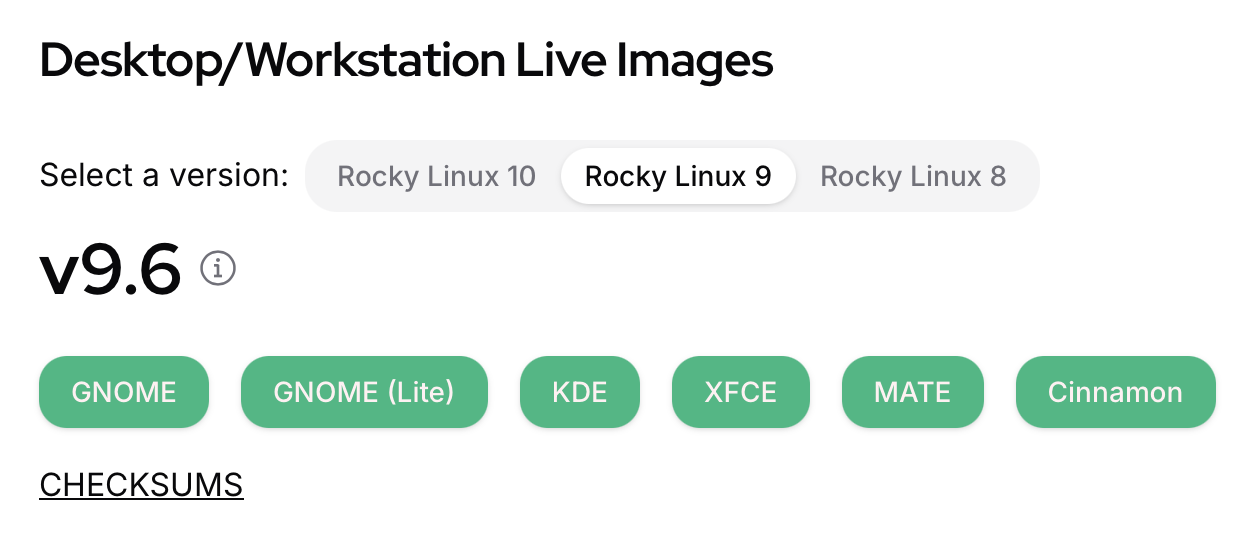This howto covers the installation of a fresh *nix box. I’ve noticed that folks love to struggle keeping up with NVIDIA, CUDA, RenderMan, all the stuff around the lab we need, love and use.
Right now - this is a template because Zhen and Tiassa asked for it. It is coming soon.
Notes
- We’re doing our best to stick to the VFX Reference Platform Standards but, like everything, there will be variances I’m sure.
- For workstations, we use Rocky 9 Workstation w/ KDE.

KDE image.
- For headless / servers (e.g., the wall-driver Boxx and the
prman-liclicense server) we just install the minimal / default non workstation image. - We’re building some embeded camera systems that use Raspberry Pi builds, mostly headless. For specifics, have a look at the project pages.
- The NVIDIA and CUDA components are a total PITA as is historically acknoleged. We’ll try to look at best-practice for current systems (e.g., at the time of this writing) but they will almost certainly change in the 15 minutes it takes to push this document up to the
gitservers and have it rendered.
Steps
- OS install - Currently we use Rocky 9 with KDE (see Figure 1). The disk and partitioning speficics will vary by machine, but since most machines at MAGIC are Windows boxes, the installer is smart enough to install
GRUBwhich allows boot-time selection of an operating system via an on-screen menu.GRUBis a mystic and fabulous cryptic universe. Do not venture down the path ofGRUBwithout a guide. This ‘how to’ install Rocky page is helpful.
Note
- If you end up at a terminal prompt or a blank screen, it’s because you have more than one monitor plugged into an NVIDIA card. Stick with minimal plugged in things. Really. Keyboard, mouse, monitor, network. Direct to motherboard (not out front, etc).
- Make sure you’re on the net.
- If it boots to a prompt or a window system screen with nothing on it, try to launch a terminal and / or run
liveinstall. - The
liveinstall, confusingly, runs a text-based installer calledanaconda. This lets you select the partitioning, users, etc. - You need blank space to install it. A fresh SSD is best and easist. You can resize and repartition the available space on an existing Windows disk but you’re in danger-land if you do that. Seen expert help.
- You want to pretty much stick with the defaults for partition size, type, etc.
- Don’t enable the
rootuser. - Do create a default admin user. Personalize it. No need for ‘generic’
mssusers or anything. We can delete / create afterward.
- Update the system packages. Running
sudo dnf upgrade -ywill bring the machine up-to-date. It takes a while. You’ll need to reboot after, just for sure.
Note
- If the machine fails to boot properly after this (or any major update) there’s a chance the kernel didn’t build correctly or got corrupted. The
GRUBboot menu will show you multiple kernel options, most usefully, it will show the previous kernel along with the current one. If you arrow key down to the previous kernel and continue to boot there’s a really good chance things will work.
- Install essential tools (git, curl, etc.)
- Set up SSH keys
- Configure dotfiles
- Install Quarto and other dev tools
XXXXXXXXXXXXXX